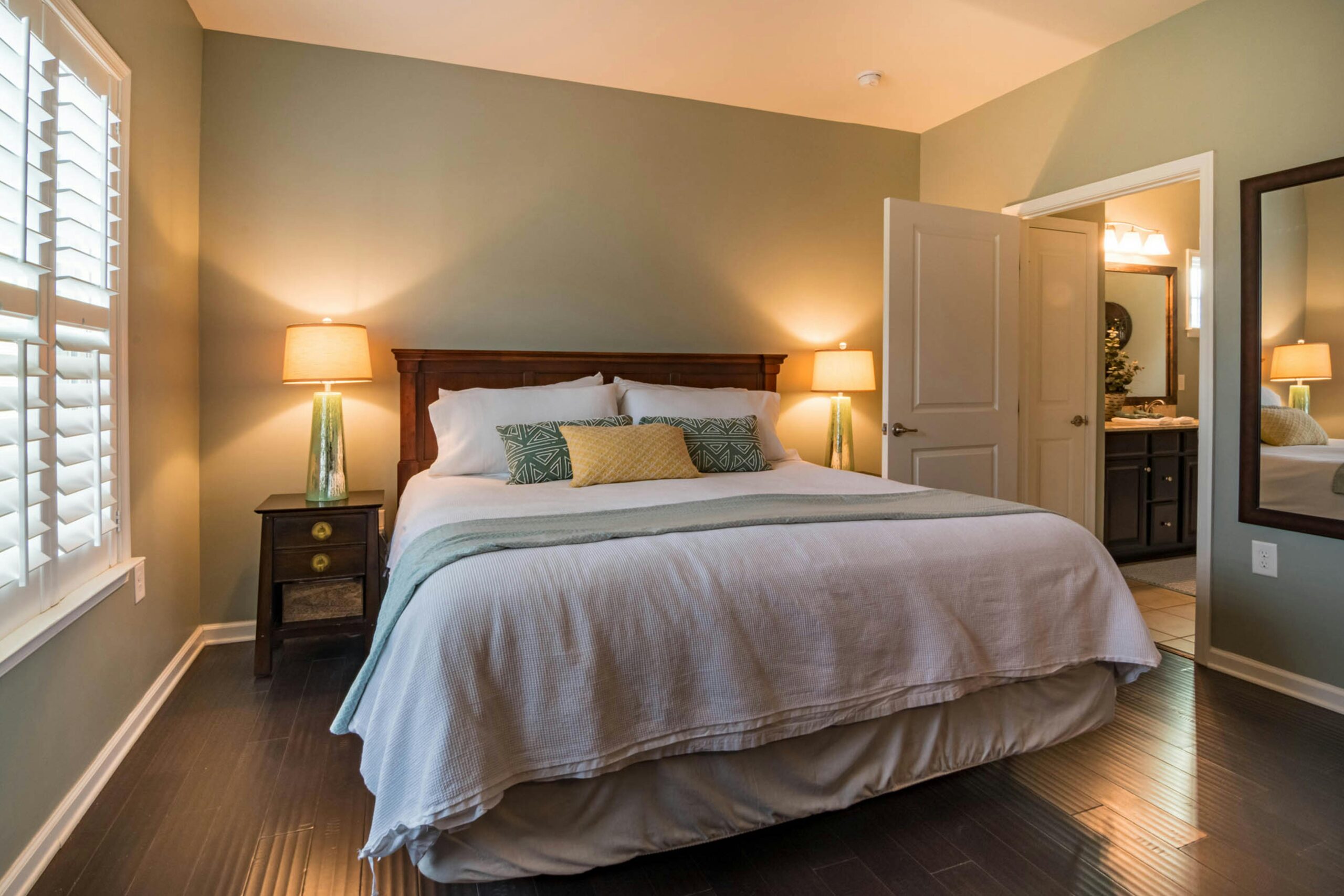As autumn settles in, bringing cooler temperatures and longer nights, many families turn their attention to ensuring a comfortable sleeping environment. One key factor in achieving a restful night’s sleep is selecting the right mattress, especially if you have a slatted bed frame. The combination of a good mattress and a supportive bed frame can significantly impact sleep quality, making it essential to understand the nuances involved in this choice.
A slatted bed frame features wooden or metal slats that provide support for the mattress while allowing for airflow. This design can be beneficial in regulating temperature, particularly during the season when nights become chillier. However, not all mattresses work well with slatted frames. It’s crucial to choose the right type to ensure proper support and comfort.
A comprehensive mattress for a slatted bed frame guide can help you navigate this decision, ensuring you make an informed choice as you prepare for the colder months ahead.
Understanding Slatted Bed Frames
Slatted bed frames are designed with a series of horizontal slats that support the mattress. This design not only provides sturdy support but also promotes ventilation, which can be particularly advantageous in regulating temperature. The gaps between the slats allow air to circulate, helping to keep the mattress dry and reducing the likelihood of mold or mildew growth.
When selecting a mattress for a slatted bed frame, it’s essential to consider the thickness and spacing of the slats. Generally, slats should be spaced no more than 3 inches apart to provide adequate support. If the slats are too far apart, they may not provide the necessary support for certain mattress types, leading to sagging and discomfort. Understanding how your slatted frame works is the first step in choosing the appropriate mattress that will work harmoniously with it.
The Importance of Mattress Compatibility
Choosing the right mattress for your slatted bed frame is crucial for several reasons. First and foremost, compatibility ensures that the mattress will provide the necessary support without sagging or becoming misshapen over time. A mattress that is too soft or lacks adequate support can lead to discomfort, affecting sleep quality and overall health.
Additionally, different mattress types interact differently with slatted bed frames. For example, memory foam mattresses often require a solid or closely spaced slatted base to prevent sagging. On the other hand, innerspring mattresses can work well with slatted frames, provided they are adequately supported. Understanding these compatibility factors is essential for making an informed decision that will enhance your sleeping experience, especially during the colder autumn months.
Choosing the Right Mattress Type
When selecting a mattress for a slatted bed frame, several types are commonly considered: memory foam, innerspring, latex, and hybrid mattresses. Each type has its unique characteristics that can affect comfort and support.
Memory foam mattresses are known for their contouring abilities and pressure-relief properties. However, they require a firm base to prevent sagging. If you choose a memory foam mattress, ensure that the slats are spaced closely enough to provide adequate support. Innerspring mattresses offer a more traditional feel and can work well with slatted frames, as they generally provide enough inherent support.
Latex mattresses are also a good option, known for their durability and breathability. Hybrid mattresses combine the best features of both foam and innerspring, offering a balanced sleeping experience. Evaluating the pros and cons of each mattress type will help you make a choice that aligns with your comfort needs.
Impact on Temperature Regulation
As autumn brings cooler temperatures, the importance of temperature regulation becomes increasingly significant. A mattress that retains heat may not provide the comfort needed for a restful night’s sleep. Slatted bed frames can enhance airflow, which is beneficial for maintaining a comfortable sleeping temperature.
Choosing a mattress that complements this airflow will improve your sleeping experience. For instance, latex and hybrid mattresses tend to offer better breathability than traditional memory foam, making them suitable for slatted bed frames. If you tend to sleep hot, look for mattresses designed specifically for temperature regulation, as these will work well with the ventilation provided by the frame.
Maintenance and Longevity Considerations
Selecting the right mattress for a slatted bed frame not only affects comfort but also impacts the longevity of both the mattress and the bed frame. A compatible mattress will distribute weight evenly across the slats, minimizing wear and tear on the frame itself. This can help prevent issues like squeaking or structural damage over time.
Regularly checking the slats and ensuring they are in good condition can also extend the life of your mattress. If you notice any slats that are broken or warped, replacing them promptly will maintain the integrity of your bed. Proper maintenance will not only ensure a better sleeping experience but will also protect your investment in both the mattress and the bed frame.
Budgeting for the Right Mattress
Budget is an important consideration when selecting a mattress for a slatted bed frame. Mattress prices can vary widely based on type, material, and brand. While it may be tempting to opt for the cheapest option, investing in a quality mattress can significantly improve sleep quality and overall health.
A higher-quality mattress may come with additional features like cooling technology or enhanced support, which can be especially beneficial during autumn. It’s advisable to take the time to research and compare different mattresses, looking for sales or promotions that can help you stay within your budget while still getting a quality product. A well-chosen mattress can provide years of comfortable sleep, making it a worthwhile investment.
FAQs
What type of mattress works best with a slatted bed frame?
Memory foam, latex, and innerspring mattresses can work well; ensure slats are spaced closely for support.
How far apart should slats be on a bed frame?
Slats should generally be spaced no more than 3 inches apart to provide adequate support for the mattress.
Can a mattress sag on a slatted bed frame?
Yes, if the mattress is too soft or the slats are too far apart, it can lead to sagging and discomfort.
How do I maintain my mattress on a slatted frame?
Regularly check the slats for damage and ensure that the mattress is rotated periodically to promote even wear.
Does a slatted bed frame improve airflow?
Yes, the design allows for increased airflow around the mattress, which can help regulate temperature and reduce moisture buildup.
Conclusion
Choosing the right mattress for a slatted bed frame is essential for ensuring comfort and support, particularly as autumn brings cooler nights. Understanding the compatibility between mattress types and slatted frames can help you make an informed decision that enhances your sleeping experience. Whether you opt for memory foam, innerspring, latex, or hybrid mattresses, considering factors such as temperature regulation and maintenance will further contribute to your overall satisfaction.
With the right mattress in place, you can look forward to restful nights and cozy mornings, making the most of the autumn season. Investing time and thought into selecting the perfect mattress not only benefits your immediate comfort but also promotes long-term health and well-being. By following the guidelines outlined in this post, you can create a sleeping environment that is both inviting and supportive for years to come.


